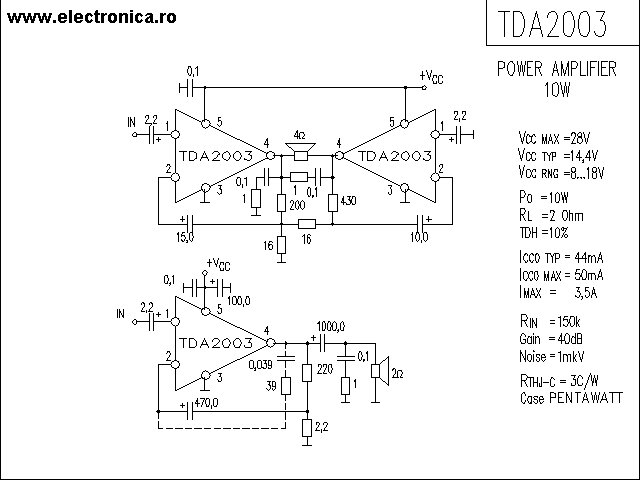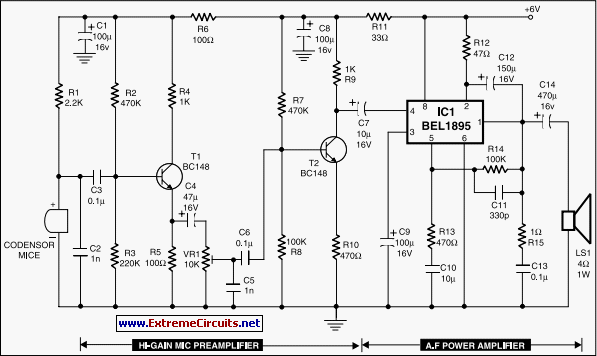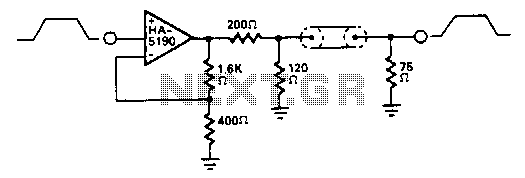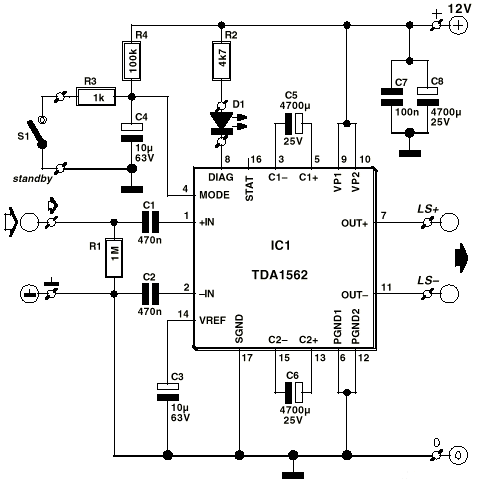
TDA2003 10W Car Radio Audio Amplifier

The operation is completely safe due to protection against DC and AC short circuits between all pins and ground, thermal over-range conditions, load dump voltage surges up to 40V, and accidental open ground situations.
The circuit design incorporates multiple safety features to ensure reliable operation under various fault conditions. Protection against DC and AC short circuits is achieved through the use of current limiting resistors and fuses, which prevent excessive current flow that could damage the components or cause hazardous situations.
Thermal protection is integrated into the design by utilizing temperature sensors that monitor the operational temperature of critical components. If the temperature exceeds a predefined threshold, the circuit can automatically reduce the load or shut down to prevent overheating.
The circuit is also equipped to handle load dump voltage surges, which can occur in automotive applications when the battery is suddenly disconnected while the alternator is still generating voltage. The design includes transient voltage suppressors (TVS) or zener diodes that clamp the voltage to safe levels, protecting sensitive components from damage.
Additionally, the circuit accounts for accidental open ground scenarios. In such cases, the design employs isolation techniques, such as opto-isolators or differential signaling, to maintain functionality without introducing ground loops that could lead to erratic behavior or damage.
Overall, this comprehensive approach to circuit protection ensures that the system operates safely and reliably in a variety of challenging conditions.Completely safe operation is guaranteed due to protection against DC and AC short circuit between all pins and ground, thermal over-range, load dump voltage surge up to 40V and fortuitous open ground. 🔗 External reference
The circuit design incorporates multiple safety features to ensure reliable operation under various fault conditions. Protection against DC and AC short circuits is achieved through the use of current limiting resistors and fuses, which prevent excessive current flow that could damage the components or cause hazardous situations.
Thermal protection is integrated into the design by utilizing temperature sensors that monitor the operational temperature of critical components. If the temperature exceeds a predefined threshold, the circuit can automatically reduce the load or shut down to prevent overheating.
The circuit is also equipped to handle load dump voltage surges, which can occur in automotive applications when the battery is suddenly disconnected while the alternator is still generating voltage. The design includes transient voltage suppressors (TVS) or zener diodes that clamp the voltage to safe levels, protecting sensitive components from damage.
Additionally, the circuit accounts for accidental open ground scenarios. In such cases, the design employs isolation techniques, such as opto-isolators or differential signaling, to maintain functionality without introducing ground loops that could lead to erratic behavior or damage.
Overall, this comprehensive approach to circuit protection ensures that the system operates safely and reliably in a variety of challenging conditions.Completely safe operation is guaranteed due to protection against DC and AC short circuit between all pins and ground, thermal over-range, load dump voltage surge up to 40V and fortuitous open ground. 🔗 External reference





